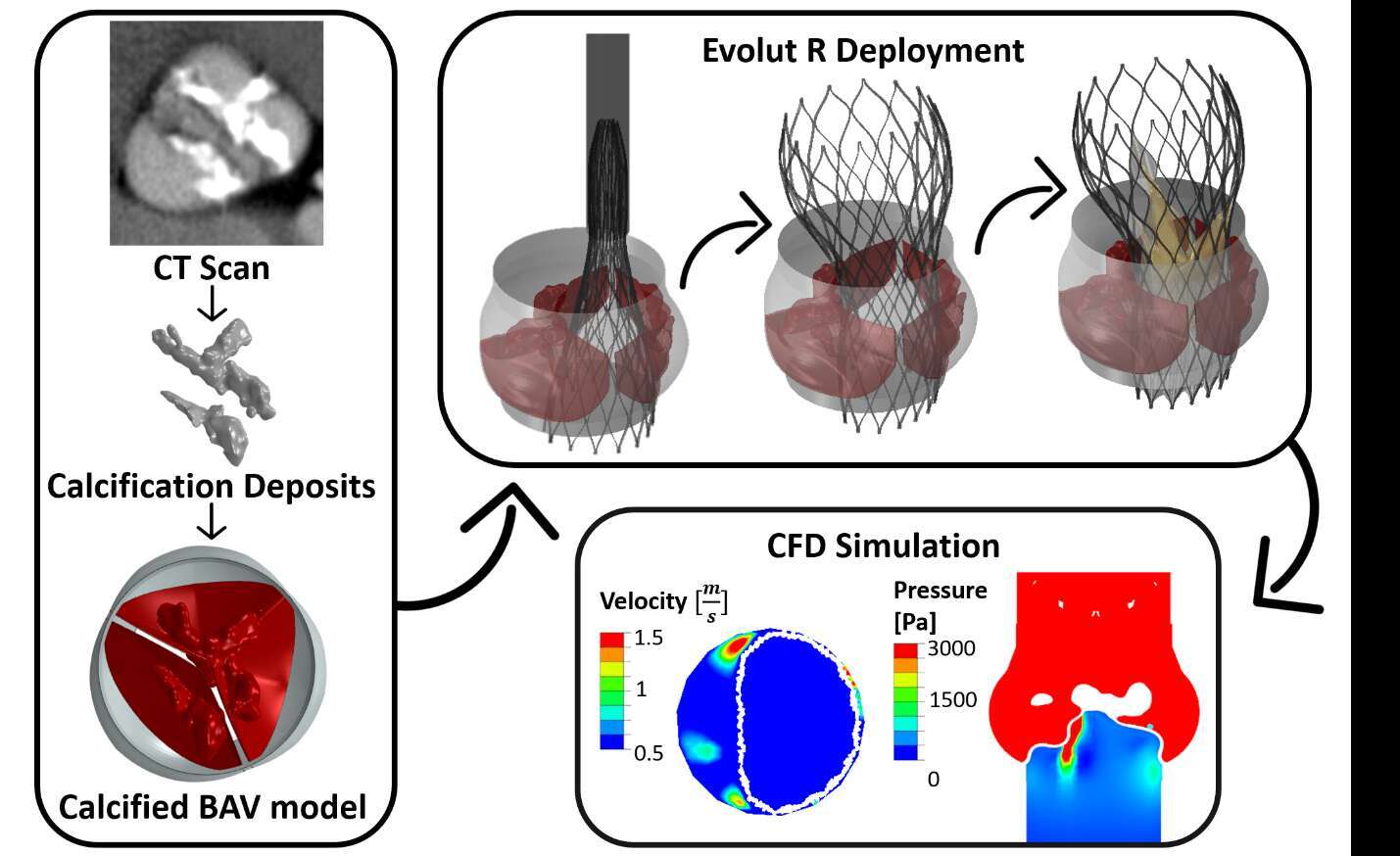
Biomechanical Modeling of Transcatheter Aortic Valve Replacement in a Stenotic Bicuspid Aortic Valve: Self vs. Balloon Expandable and Paravalvular Leakage
Bicuspid Aortic Valve (BAV) is a congenital heart disease, where the valve is composed of two leaflets. Over 50% of patients who are diagnosed with Calcific aortic valve disease (CAVD) has a BAV. Transcatheter aortic valve replacement (TAVR) is a treatment approach for CAVD. The off-label use of TAVR within calcified BAV patients raise concerns stemming from the asymmetrical structure of the BAV, which can cause partial anchoring and paravalvular leakage (PVL). Also, the implantation outcomes vary according to the usage of balloon or self-expandable valve.
This study aims to develop refined computational models simulating the deployments of self and balloon-expandable TAVR devices inside calcified BAV. The PVL was also calculated by CFD simulations. CT scan of severely stenotic BAV patient was acquired. The 3D calcium deposits were generated and embedded inside a parametric model of the BAV. Deployments of the Evolut R, PRO and Sapien 3 inside the calcified BAV were simulated. The Evolut stent was characterized in asymmetric and elliptic deployment, with lower anchoring forces compared with the Sapien 3. The Sapien 3 and Evolut PRO had comparable PVL values, reduced in half compared with the Evolut R. The simulations were validated against in vitro experiments of calcified patient-specific Silicone replica incorporated into a Vascular Simulations Replicator® system, with the deployed TAVR valves tested under physiologic flow conditions. The proposed biomechanical computational models could help assess the functionality of TAVR in BAVs towards the development of a custom asymmetric TAVR design for BAV patients.

Powered by Eventact EMS